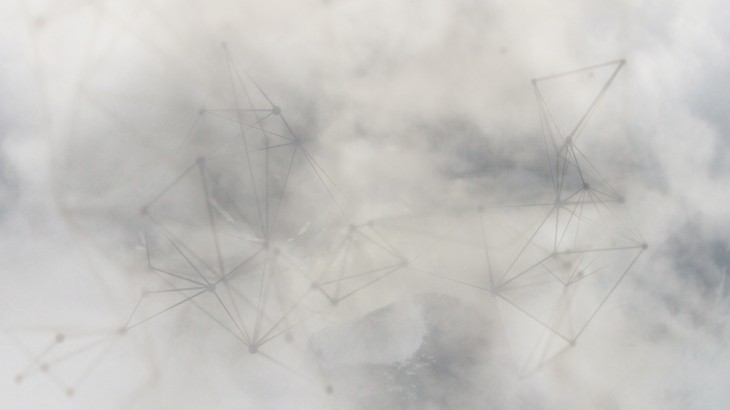“Upon entering the fog mass, visual and acoustic references is erased, leaving only an optical white-out and the white-noise of pulsing nozzles. Blur is an anti-spectacle. Contrary to immersive environments that strive for high-definition visual fidelity with ever-greater technical virtuosity, Blur is decidedly low-definition: there is nothing to see but our dependence on vision itself.”
Diller Scofidio
Case study: Blur building, Diller Scofidio + Renfro
Critical reading: G. Deleuze, F. Guattari, “Rhizome”, in a Thousand Plateaus, July 1980, pp. 3-25
The Blur is an unconventional building designed by DS+R, an American multidisciplinary firm that constantly swings from architecture to art.
The practice started its work setting temporary installations and at the beginning its attentions was closer to art and theory than to conventional buildings and constructions. This interest was carried on even after they started designing “real” buildings, so the practice has continued to investigate the art field developing media installations, sculptures, sets, and integrating these art researches in their projects, focusing on the consequences of architecture in the society.
The Blur is an installation designed for the Swiss Expo 2002 on Lake Neuchatel. It is an architecture of atmosphere, an ephemeral non-built construction that interacts with the users and the context, investigating the concept of evanescence. The pavilion was characterized by 31’500 high-pressure nozzles pumping the water from the lake to create a big cloud. A smart weather system was able to read the shifting climatic conditions of temperature, humidity, wind speed and direction, processing the data and modulating the cloud’s shape.
“Upon entering the fog mass, visual and acoustic references is erased, leaving only an optical white-out and the white-noise of pulsing nozzles. Blur is an anti-spectacle. Contrary to immersive environments that strive for high-definition visual fidelity with ever-greater technical virtuosity, Blur is decidedly low-definition: there is nothing to see but our dependence on vision itself.” (DS)
This building was a sensorial experience. In fact, within the cloud the public could feel and “drink” the architecture in a media installation that involved all the human senses. Moreover, the pavilion tried to interact with the users establishing new relations between “compatible” users, thanks to the raincoats (brain coats), that visitors were supposed to wear. Indeed, before entering to the pavilion visitors were invited to fill a questioner about their character profiles, then in the brain coats were loaded the personal character data. Therefore the coats were used as protection from the wet environment as well as personality data storage. Communicating with the cloud’s computer network and using tracking location technologies, each visitor’s position could be identified and the character profiles compared each other. When visitors passed one another, their coats could change colour indicating the degree of attraction or repulsion.
The pavilion represents a changeable form, a dynamic system that processes data and establishes relations based on personal information. Moreover, the Blur symbolizes the construction of a building dissolution. This dichotomy (built – unbuilt) is not the only one that can be observed in this project: this architecture is at the same time solid and temporary, stable and in-stable, static and dynamic.
If the architecture is thought to reflect the humankind, I read many analogies between the cloud and the current society. The building, as our society is a liquid mass without any straight hierarchies nor univocal interpretation or conventional limits.
In my opinion, designing a good public building means understand and interpret the human behaviour. Personally I consider fundamental for my profession the works of sociologists and anthropologists such as Lévi-Strauss, Augé Latouche and Bauman. From this perspective I would be interested in analysing the Deleuze concept of rhizome and the idea of non-linear thinking, considering his works a key point for my personal and professional growth, as well as an interesting reflection on contemporary society and humans behaviours.
Image: Matteo Silverio

